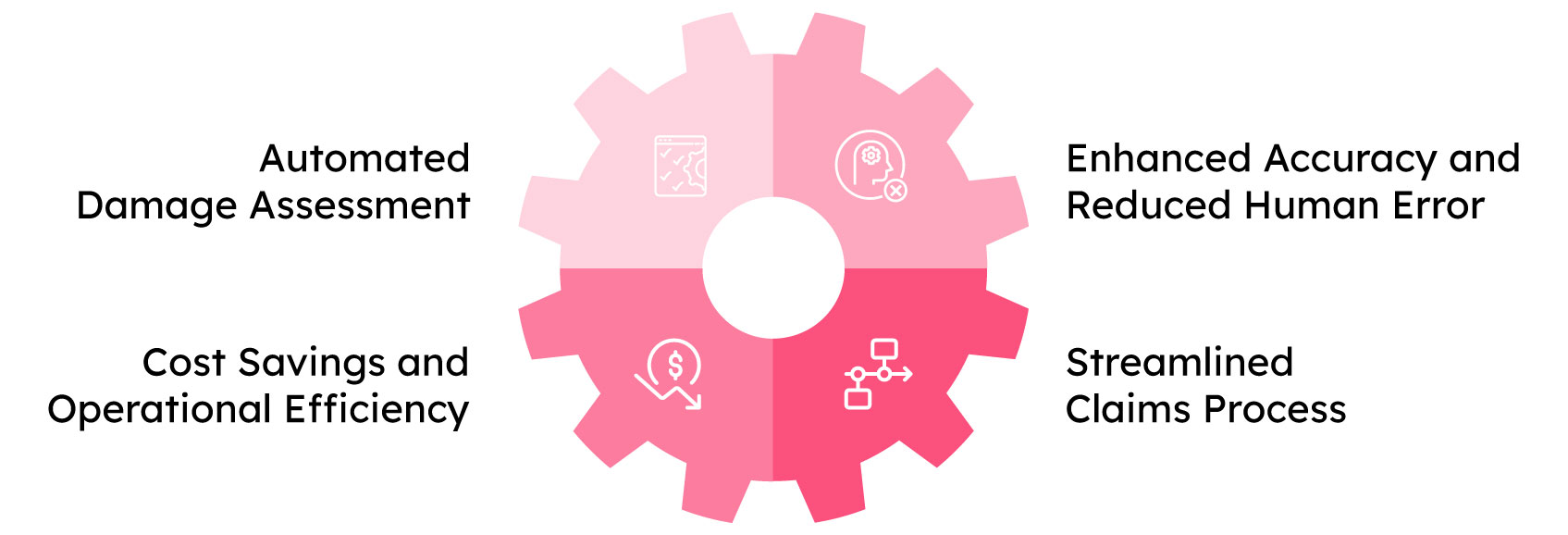Traditional vehicle inspections are taking a back seat as the industry heavily embraces AI. It is no longer a far-fetched possibility that AI is dominating the insurance market. Ever since the emergence of ChatGPT, leveraging AI into business processes has become a regular occurrence. From small-scale industries to large-scale enterprises, AI is on everyone’s radar. As AI adoption increases, the Motor insurance industry too braces to leverage AI in crucial processes. One such is Vehicle Inspections. Keep reading till the end to decode further!
The Traditional Way of Vehicle Inspection
If long checklists, hunting for damages minutely, and fear of missing any damage seem relatable to you, then, you are in need of automation in vehicle inspection. Manual vehicle inspections are tedious, and definitely not the most efficient process.
Now picture this, you have a vehicle inspection solution that has automated reporting and analytics features, looks for any pre-existing damage on the vehicle just by looking at the before-accident and after-accident images of the vehicle, and more. Sounds efficient, right?
That’s what AI in insurance vehicle inspections can do!
How AI Helps in Vehicle Inspections?
As the Motor Insurance landscape becomes more competitive and advanced, the vehicle inspection process is also taking a spin with automation.
Here’s a closer look at how AI can help in vehicle inspections:

Automated Damage Assessment
One of the ways by which AI is redefining the vehicle inspection process is by facilitating automated damage assessment. AI algorithms are capable of analyzing the images of damaged vehicles to identify different types of damage, and also the extent of damage, and significantly reduces the need for manual inspection and analysis.
Enhanced Accuracy and Reduced Human Error
Another pivotal way by which AI is modernizing the vehicle inspection process is by enhancing accuracy. AI algorithms can significantly be helpful in identifying vehicle damages minutely, which might have been missed by the surveyors.
Additionally, AI-powered systems offer an objective and consistent assessment of damage and thereby reduce the scope for manual human errors. Additionally, with AI in vehicle inspections, there is a broader analysis of the patterns and the trends thereby, helping the insurers to improve their risk assessment and the pricing model.
Cost Savings and Operational Efficiency
This is another key area where AI is significantly impacting vehicle inspections. With AI in vehicle inspection, insurers can significantly reduce manual vehicle inspections and human intervention, leading to lowered costs for hiring surveyors.
These AI-powered systems also help the insurers to optimize their resources and improve their operational efficiency, thus allowing for handling a higher volume of claims within the same level of resources.
Streamlined Claims Process
Automation in Vehicle inspection significantly reduces wait times, helps insurers process claims much more quickly, and improves customer satisfaction. The use of AI-powered systems can significantly help increase transparency in the claims process, thereby offering policyholders clear and detailed information about the assessment of vehicle damage.
AI in Vehicle Inspection: A Quick Glance at Top Use Cases
Here’s a quicker look at some of the tailored use cases for the vehicle inspection process:
Predictive Maintenance
One of the pivotal use cases of AI in vehicle inspection is predictive maintenance. AI algorithms can significantly predict potential issues by interpreting historical data and real-time sensor readings. This allows the insurers for timely maintenance and thereby reduces the chances of mechanical breakdowns and improves the overall vehicle safety and longevity.
Automated Visual Inspection
Insurers leverage AI-powered computer vision to analyze the images and videos of the vehicle damage and analyze it minutely to look at the damages. This includes assessing the condition of the paint, identifying any dents or scratches, and detecting the component wear and tear.
Pattern Recognition
The Machine Learning models are trained on vast datasets of vehicle damages and conditions, and this enables us to recognize and classify the various types of internal and external damages.
Data Analysis and Decision Support
Another key area where AI is significantly helping insurers is by offering detailed vehicle inspection reports to manufacturers, service caters, vehicle inspection stations, and automobile experts. This data-driven approach helps in making smarter decisions in terms of design improvements and customer service.
Anomaly Detection
Another key aspect where AI in vehicle inspections is truly helping Motor Insurers is through Anomaly detection. The AI-powered systems can significantly detect anomalies in vehicles, alerting the technicians of their potential vehicle issues which might not be easily noticeable. This early detection significantly helps in preventing minor issues and thus enables in avoiding major issues.
Conclusion
AI in vehicle inspections can significantly enhance the regular vehicle inspection process and introduce accuracy, efficiency, and steadfastness in the otherwise tedious and manual-intensive process.

Archismita Mukherjee
Insurance Content Analyst


